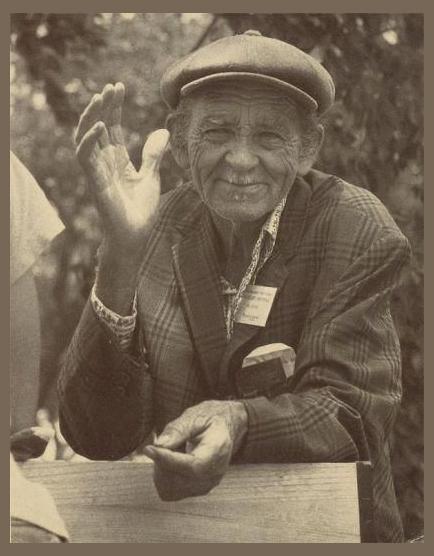 Sam Chatmon
Sam Chatmon
Sam Chatmon: The Bluesman with the Painted Face
In the annals of the blues, the enigmatic figure of Sam Chatmon stands out with his haunting vocals and a signature style that defied convention.
Early Life and Influences:
Born in Bolton, Mississippi, in 1897, Chatmon's musical roots were deeply entwined with the rich traditions of the Delta blues. As a young boy, he was captivated by the sounds of his father, a fiddler, and his uncles, renowned bluesmen Charlie and Aaron Patton.
The Painted Face:
As a teenager, Chatmon developed a peculiar habit: he would paint his face a ghastly white with flour or ashes, creating an unforgettable stage presence. The origin of this practice remains shrouded in mystery, but some speculate it was a ritualistic homage to the spirits of his ancestors or a way to conceal his identity while performing in dangerous juke joints.
Musical Journey:
Chatmon's career spanned several decades, beginning in the 1920s with local performances in Mississippi. In 1928, he traveled to Memphis and made his first recordings, including his signature song "I Have To Paint My Face." The haunting lyrics and eerie vocals instantly captivated audiences, establishing Chatmon as a unique and iconic figure in the blues world.
Challenges and Controversies:
Chatmon's life was not without its challenges. His painted face made him a target for ridicule and superstition, and he often faced resistance from both white and black audiences. Despite the obstacles, he persevered, performing tirelessly in small venues and at festivals.
Discography:
Chatmon's recorded output was extensive, spanning multiple labels and collaborations. His most notable recordings include:
* "I Have To Paint My Face" (1928)
* "Mississippi Boll Weevil" (1928)
* "Walkin' Blues" (1929)
* "She's Got A Gal" (1931)
* "Tombstone Blues" (1931)
Later Years and Legacy:
In his later years, Chatmon continued to perform and record sporadically. He was rediscovered by a new generation of blues enthusiasts in the 1960s and 1970s, leading to a resurgence of interest in his music. Sam Chatmon passed away in 1983, leaving behind a legacy as one of the most distinctive and influential bluesmen of all time.
Members:
Over the course of his career, Sam Chatmon collaborated with various musicians, but he was primarily a solo performer. He was known for his exceptional guitar skills and his haunting vocals, which often evoked a sense of loneliness and despair.
In the annals of the blues, the enigmatic figure of Sam Chatmon stands out with his haunting vocals and a signature style that defied convention.
Early Life and Influences:
Born in Bolton, Mississippi, in 1897, Chatmon's musical roots were deeply entwined with the rich traditions of the Delta blues. As a young boy, he was captivated by the sounds of his father, a fiddler, and his uncles, renowned bluesmen Charlie and Aaron Patton.
The Painted Face:
As a teenager, Chatmon developed a peculiar habit: he would paint his face a ghastly white with flour or ashes, creating an unforgettable stage presence. The origin of this practice remains shrouded in mystery, but some speculate it was a ritualistic homage to the spirits of his ancestors or a way to conceal his identity while performing in dangerous juke joints.
Musical Journey:
Chatmon's career spanned several decades, beginning in the 1920s with local performances in Mississippi. In 1928, he traveled to Memphis and made his first recordings, including his signature song "I Have To Paint My Face." The haunting lyrics and eerie vocals instantly captivated audiences, establishing Chatmon as a unique and iconic figure in the blues world.
Challenges and Controversies:
Chatmon's life was not without its challenges. His painted face made him a target for ridicule and superstition, and he often faced resistance from both white and black audiences. Despite the obstacles, he persevered, performing tirelessly in small venues and at festivals.
Discography:
Chatmon's recorded output was extensive, spanning multiple labels and collaborations. His most notable recordings include:
* "I Have To Paint My Face" (1928)
* "Mississippi Boll Weevil" (1928)
* "Walkin' Blues" (1929)
* "She's Got A Gal" (1931)
* "Tombstone Blues" (1931)
Later Years and Legacy:
In his later years, Chatmon continued to perform and record sporadically. He was rediscovered by a new generation of blues enthusiasts in the 1960s and 1970s, leading to a resurgence of interest in his music. Sam Chatmon passed away in 1983, leaving behind a legacy as one of the most distinctive and influential bluesmen of all time.
Members:
Over the course of his career, Sam Chatmon collaborated with various musicians, but he was primarily a solo performer. He was known for his exceptional guitar skills and his haunting vocals, which often evoked a sense of loneliness and despair.